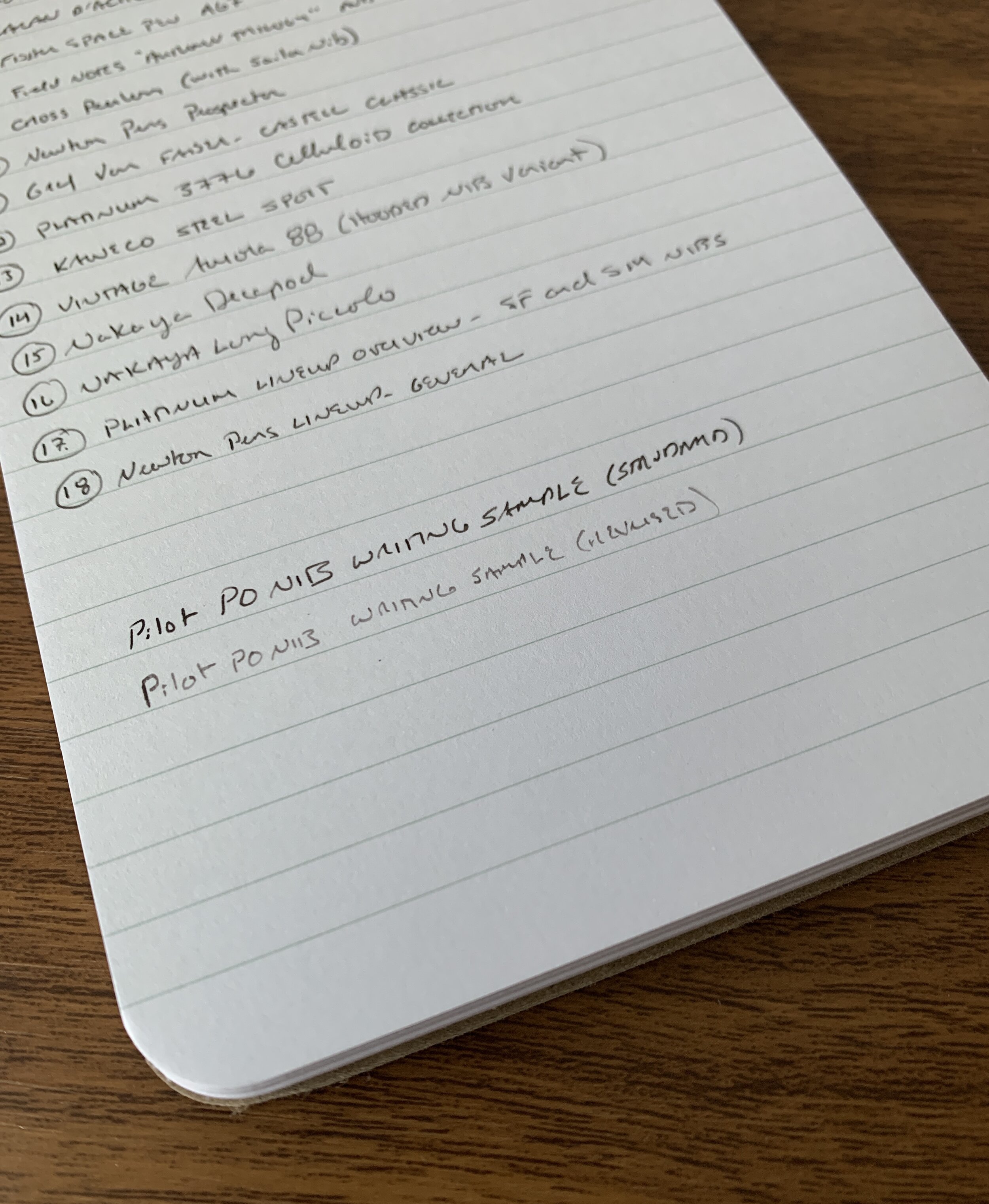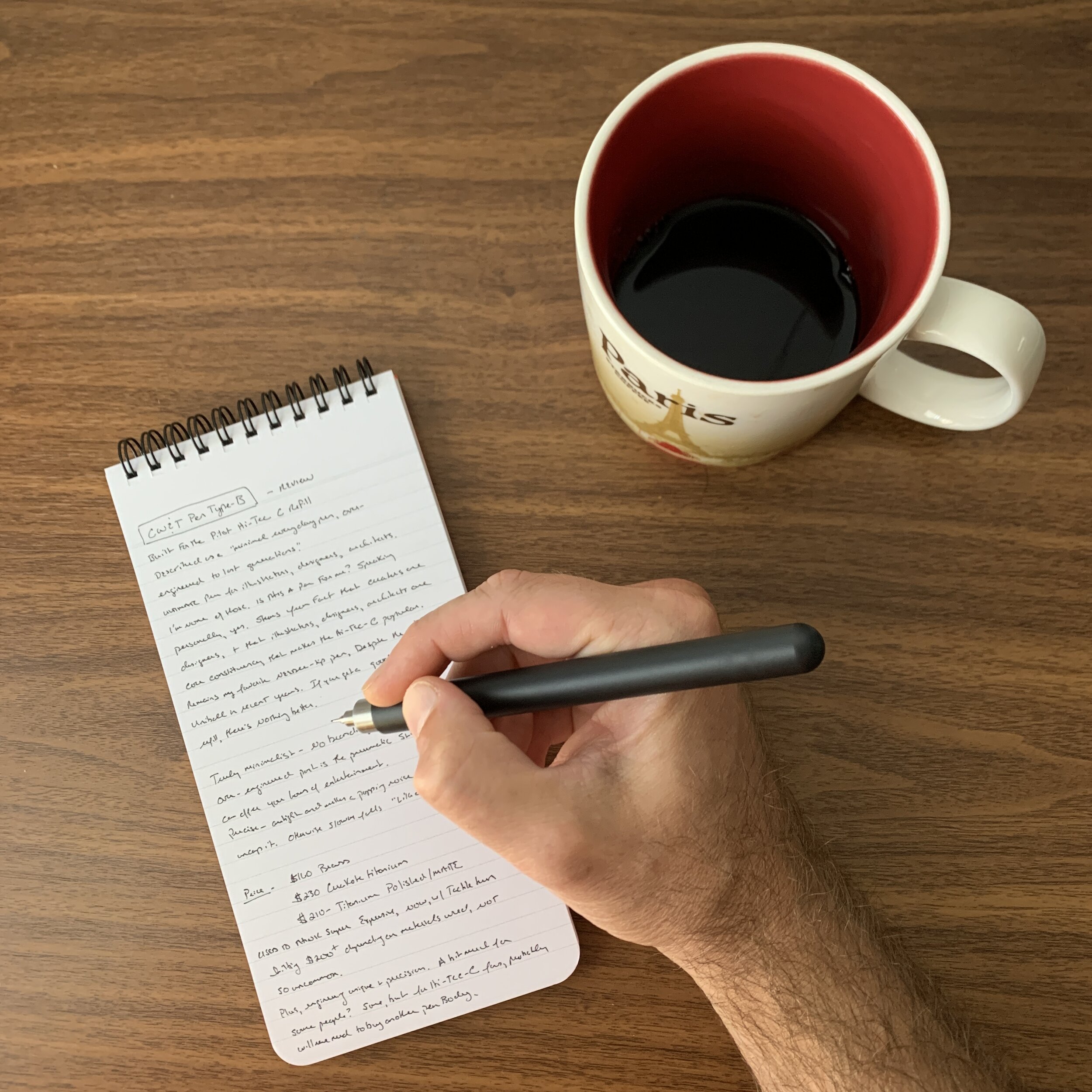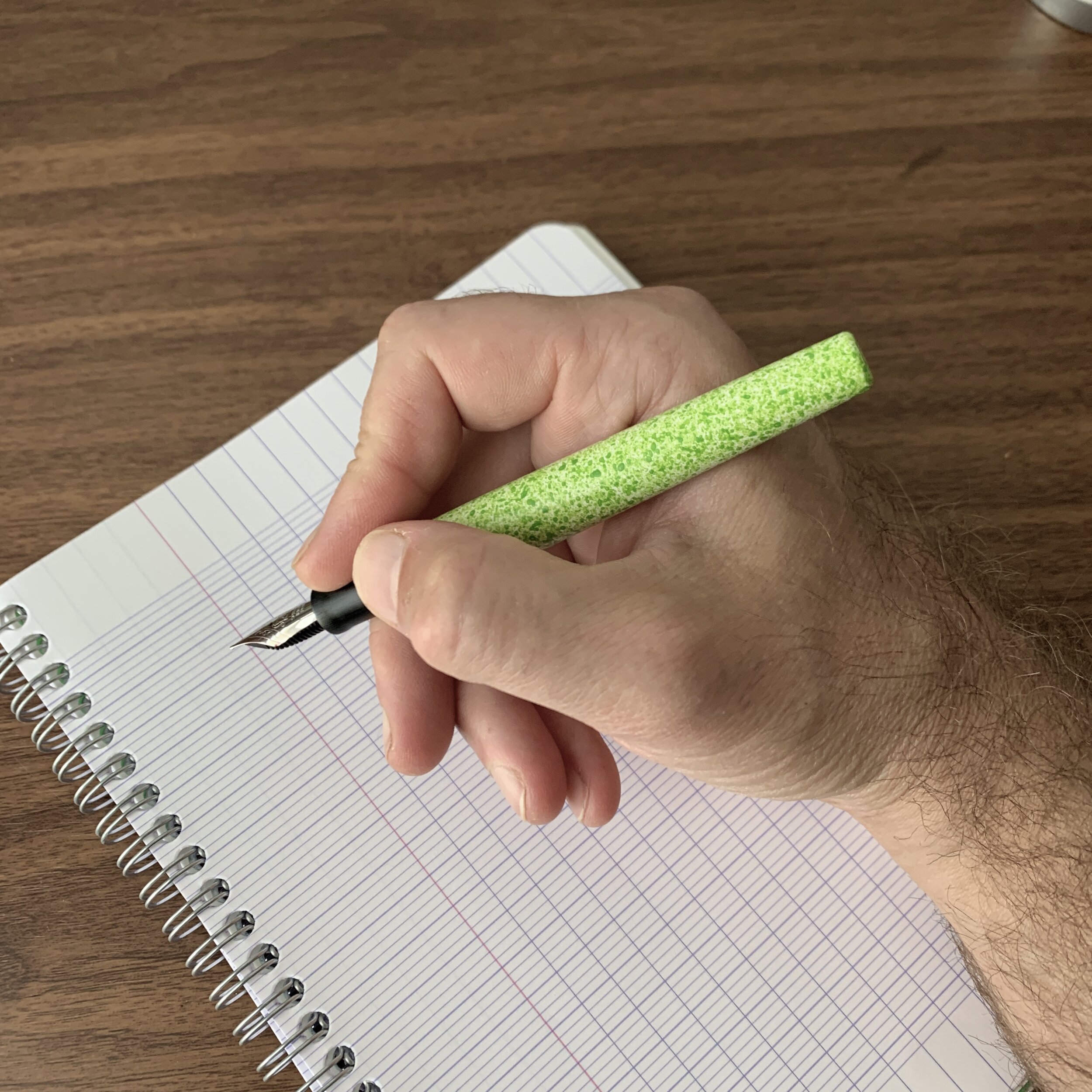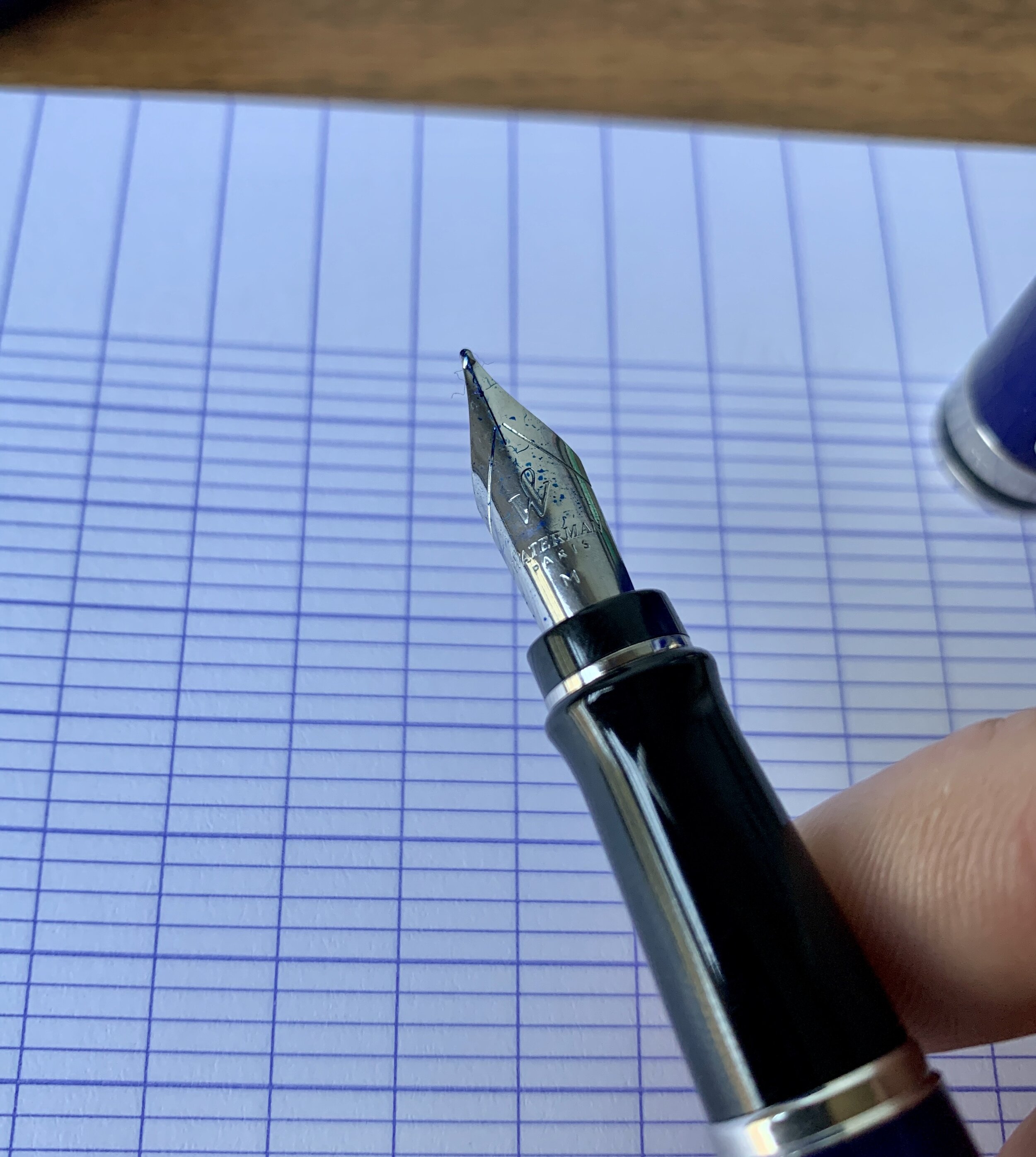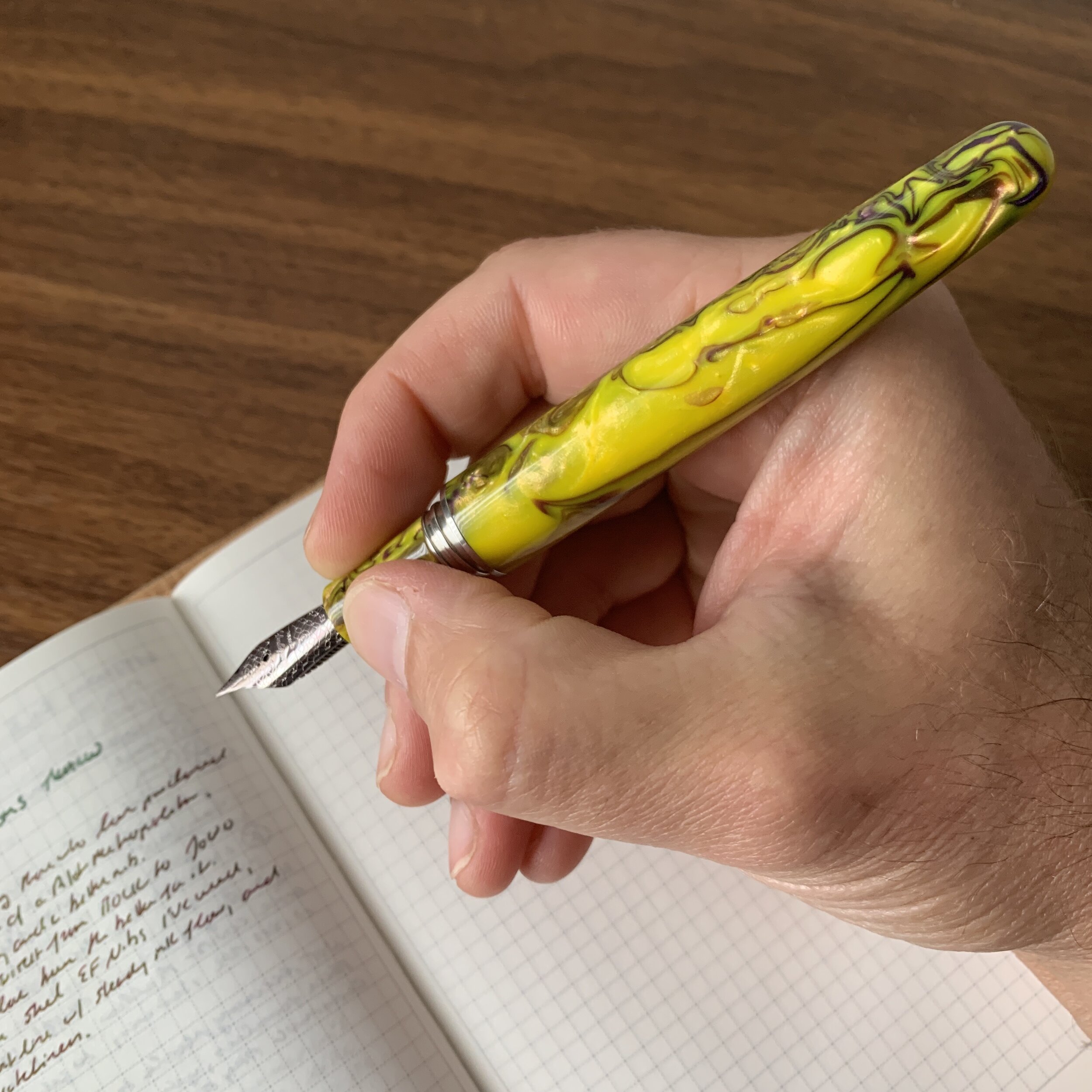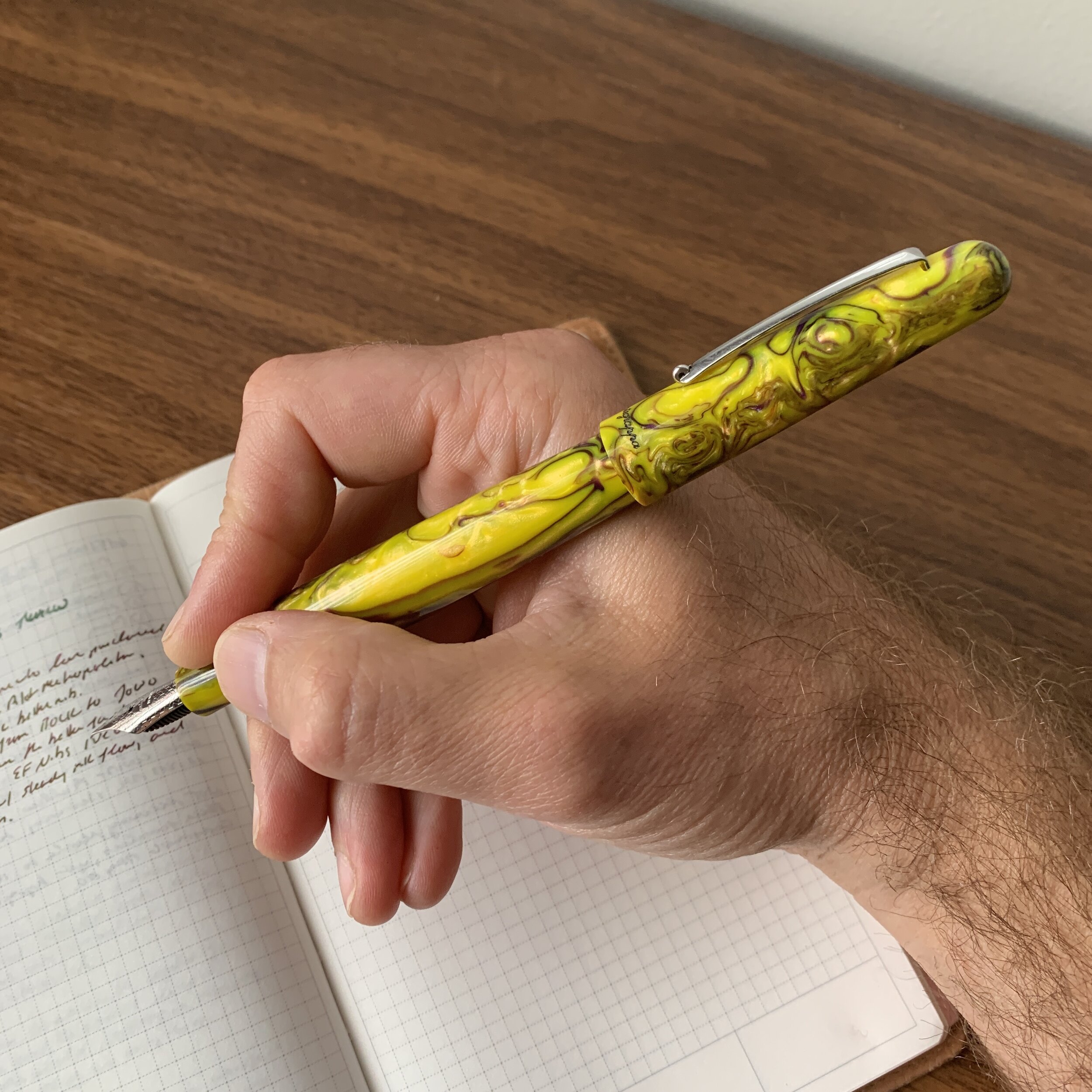Three years ago I reviewed the Pilot Custom Heritage 912 with Pilot’s flexible “FA” nib, and decided that while I enjoyed the classic look of the pen, that particular nib wasn’t for me. At the time, I predicted that once I had the chance to try the “PO” (or “Posting”) nib - Pilot’s take on the “ultra extra fine” or “needlepoint” trend - I would end up purchasing a Custom Heritage 912 for myself. It took longer than expected, but I was right.
In certain aspects of my work (i.e. annotating documents and working on very cheap recycled paper) it’s advantageous for me to be able to write extremely small. In addition to standard Japanese extra-fine nibs, my collection features several hand-ground needlepoints and also standard “specialty” nibs like Platinum’s “Ultra-Extra Fine”, which I’ve previously reviewed and which is now increasingly available at retail outside of Japan. I’m just now getting around to exploring what the other Japanese pen companies like Pilot and Sailor have to offer in this regard.
Yes, that’s how the tip’s supposed to look!
The first thing you need to understand about Pilot’s PO nib is that it’s intended for a very specific user, meaning that you shouldn’t purchase this pen without careful consideration. For starters, the Custom Heritage 912 costs around $200 whether you purchase from your domestic U.S. retailer or overseas, so it’s not in the “impulse buy” category. While you used to be able to save money buying on eBay or Amazon, the current pandemic has caused shipping rates to rise, cutting into the “discount.” Second, the PO nib is extremely stiff - firmer than any nib I’ve ever used - so if you’re someone who likes even a little cushion when writing, you’ll probably want to take a hard pass on this pen. Those two things notwithstanding, I can comfortably say that Pilot’s PO nib offers my favorite out-of-the-box “ultra fine” or “needlepoint” writing experience on the market.
This nib was originally intended for writing on cheap postcards, which apparently used to cost much less to send through the Japanese postal system than standard mail. The point of the nib has been turned down to reduce ink flow and to prevent feathering on this less expensive, more fibrous paper. While you may still get some bleedthrough, in my experience this nib makes a fountain pen usable on even the cheapest recycled copy paper.
A writing sample showing how you can write even smaller if you flip the PO nib over and write using the reverse side.
Takeaways and Where To Buy
Dare I say that the Pilot Custom Heritage 912 with a PO nib might be the “ultimate note-taking pen” for those of us that like to cram as much writing as possible onto a page? This workhorse might not be flashy, but it showcases the best of what Pilot has to offer nib-wise. While you can purchase this pen with a couple different standard nib sizes (EF and Soft Fine), most people opt for a specialty nib, including the PO nib featured here, the SU (stub), music, FA (flexible), and Waverly. As you can tell from my review above, I love the PO nib, and just wish it wasn’t so hard to find in the U.S.
Currently, both Pen Chalet and The Nibsmith stock the Pilot Custom Heritage 912, but neither retailer has the PO nib in stock. If your preferred retailer can’t place a special order for you, you’ll have to order direct from Japan, where the PO nib still appears to be available. You may get a slight break on price as well, but these days shipping costs will eat up most of the difference.
Disclaimer: I acquired the pen featured in this review from Dan at The Nibsmith for review purposes, and received a discount. Many thanks to Dan for making this review possible!
The Pilot Custom Heritage 912, shown here compared against a Write Notepads Reporter-style Notebook, available for sale in the TGS Curated Shop.
